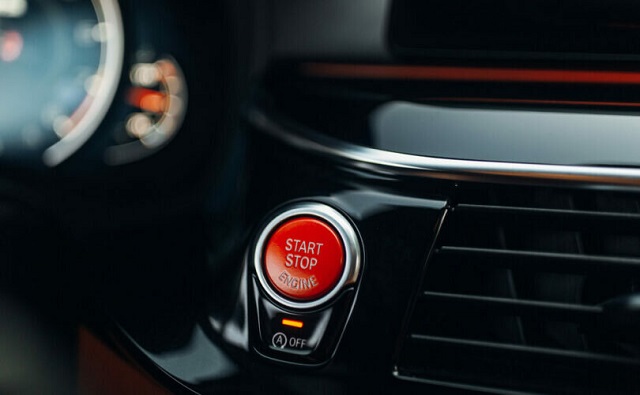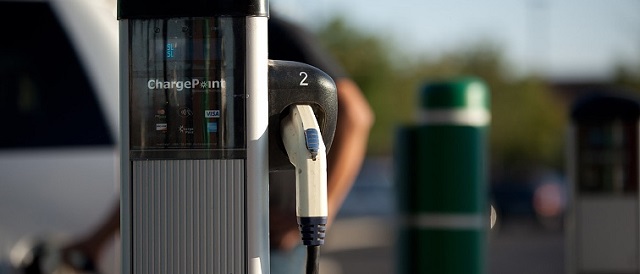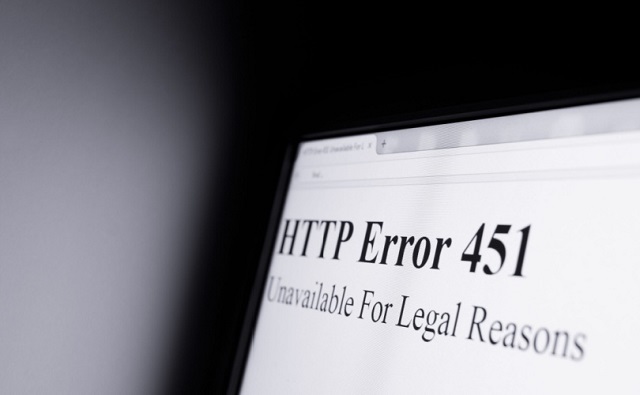Automotive
Vehicle monitoring software could soon use ‘kill switch’ under the guise of ‘safety’

From LifeSiteNews
By Caryn Lipson
Ambiguity surrounds the definitions of ‘impairment’ and the consequent privacy implications of such technology, raising fears of government overreach and erosion of rights.
In the name of safety, the government has taken steps that critics say have denied citizens what used to be considered inalienable constitutional rights.
Citizens are concerned that their right to freedom of speech under the First Amendment is being denied, ostensibly, to keep citizens safe from “harmful misinformation,” and fear that the Second Amendment right to bear arms is being infringed upon to combat gun violence. Watchdogs further contend that citizens are being denied the Fifth Amendment’s protection against self-incrimination and the Sixth Amendment’s right to face one’s accuser when technology is used to gather evidence.
READ: Vietnam’s new biometric ID cards raise fears of privacy violations, data breaches
The fear now is that increased use of technology will soon mean an even greater loss of privacy and further erosion of the Fifth and Sixth Amendments, due to certain provisions in Joe Biden’s infrastructure bill which will soon become mandatory. Under the guise of keeping citizens safe by preventing drunk driving, it may amount to ceding the freedom to travel to government control.
H.R.3684 – Infrastructure Investment and Jobs Act
The infrastructure bill, HR. 3684, passed by both chambers of Congress and signed by Biden on November 15, 2021, includes a provision for several vehicle monitoring technologies to be installed in cars, which have recently or will soon be required in new vehicles, including technology to determine if a driver is drunk or impaired.
The Center for Automotive Research’s Eric Paul Dennis reviewed the bill and summarized “key sections.” Dennis, a senior transportation systems analyst, reviewed the section on “Drunk and Impaired Driving Prevention Technology” (HR 3684 Section 24220) and explained that Congress gave the NHTSA (National Highway Traffic Safety Administration) the role of determining exactly what this section means and how it will be implemented:
This provision directs NHTSA to issue a rule to require ‘advanced drunk and impaired driving prevention technology’ in new light vehicles.
- Congress tasked NHTSA with interpreting this law, including establishing the statutory meaning of ‘impaired.’
- The legislation directs NHTSA to adopt a new safety mandate by 15 November 2024 and begin enforcing it by September 2027 (at the latest) if this is feasible. [Emphases added.]
Impaired driving not defined
Others, such as Michael Satterfield, writing as The Gentleman Racer®, were more detailed in their review of the legislation. Satterfield poured through the 1,039-page infrastructure bill. He agreed that good roads, bridges, and safety are important to automotive enthusiasts, but wrote that he uncovered some concerning legislation “buried deep within HR.3684.” The legislation calls not only for changes in crash testing and advanced pedestrian crash standards but also for a “kill switch” to be standard for all new vehicles by 2026.
Satterfield explained that all new vehicles will be required to have passive monitoring systems for the driver’s behavior and an algorithm will determine if the driver is too impaired to operate the vehicle. If the algorithm decides that the driver is too impaired to operate the car, the program will have some means of taking control of the vehicle. But what constitutes impairment and what the program will actually do was not explained by the legislation, as Satterfield noted:
What is not outlined in the bill is what constitutes impairment, outside of the blood alcohol standard, how does the software determine the difference between being tired and being impaired? Passive blood alcohol testing won’t detect impairment from prescription painkillers or other narcotics.
The bill also doesn’t outline what happens when a vehicle detects a driver may be impaired other than that the system must ‘prevent or limit motor vehicle operation if an impairment is detected’ which is all well and good in a bar’s parking lot. But what will this system do if an ‘impairment is detected’ while traveling at 75 mph on the highway? [Emphasis added.]
Accused by your own car’s surveillance system
Satterfield’s greatest concern was the question of individual privacy that a vehicle that monitors the driver raises, including who will have access to the data, and other issues such as the right not to self-incriminate under the Fifth Amendment and the Sixth Amendment right to face your accuser.
He also expressed concern that most drivers will not be aware of the new technology until it affects them in some way:
Perhaps the most disturbing aspect of the legislation is the lack of detail. The main concerns expressed by many, including former U.S. Rep. Bob Barr, come down to privacy. Who will have access to the data? How long will it be stored? Will this capability be exploitable by third-party or government agencies to shut down vehicles outside of the function of preventing impaired driving?
Privacy concerns and the 5th Amendment’s right to not self-incriminate, and the 6th Amendment’s right to face one’s accuser, have already been used to challenge data collection from license plate readers and redlight cameras. Automakers have little choice but to comply with new federal mandates and the majority of consumers will likely be unaware of this new technology until it impacts them in some way. [Emphasis added.]
Freedom or control?
John Stossel recently interviewed former vintage race car driver Lauren Fix about what she believes are the implications of the soon-to-be-implemented impaired driving technology, as reported on FrontPage Magazine.
READ: High-tech cars are secretly spying on drivers, resulting in insurance rejections: NYT report
Fix pointed out that the algorithm cannot determine what exactly is happening in the car and with the driver and asks Stossel how much control over his life he is willing to give up:
Are you willing to give up every bit of control of your life? Once you give that up, you have no more freedom. This computer decides you can’t drive your vehicle. Great. Unless someone’s having a heart attack and trying to get to the hospital.
California, Fix pointed out, already requires vehicle software to limit excess speed to 10 miles over the limit, legislation about which Frontline News reported.
Fix also revealed to Stossel that some companies already collect and sell driver data and proceeded to outline further abuses that could occur as a result of computer surveillance technology, such as charging for mileage or monitoring your “carbon footprint” and deciding that you maxed out on your monthly carbon credits so you can’t drive anymore until the following month. Or perhaps the car won’t start because the software determines you may be on your way to purchase a firearm.
What about hackers?
Can hackers access a vehicle’s software and take control of someone’s car? This possibility is another worrying aspect of the infrastructure bill, which Frontline News will discuss in an upcoming report.
Reprinted with permission from America’s Frontline News.
Automotive
Biden’s Climate Agenda Is Running Headfirst Into A Wall Of His Own Making

 From the Daily Caller News Foundation
From the Daily Caller News Foundation
By WILL KESSLER
President Joe Biden’s administration unveiled tariffs this week aimed at boosting domestic production of green energy technology, but the move could end up hamstringing his larger climate goals.
The tariffs announced on Tuesday quadruple levies for Chinese electric vehicles (EVs) to 100% and raise rates for certain Chinese green energy and EV components like minerals and batteries. Biden has made the transition to green energy and EVs a key part of his climate agenda, but hiking tariffs on those products to help U.S. manufacturing could jack up prices on the already costly products, slowing adoption by struggling Americans, according to experts who spoke to the DCNF.
The risks posed by hiking levies on green technology expose the inherent tension between Biden’s climate agenda and his efforts to protect American industry, which often struggles to compete with cheap foreign labor. Items on his climate agenda typically raise costs, and requiring companies to comply could make them uncompetitive on the world stage.
“These tariffs are a classic example of the Biden administration’s left hand not knowing what the right hand is doing,” E.J. Antoni, a research fellow at the Heritage Foundation’s Grover M. Hermann Center for the Federal Budget, told the DCNF. “The inability to import Chinese-made EVs due to prohibitively high costs will necessitate importing raw materials and parts for EVs from China. Since automakers can’t afford to build and assemble the vehicles here, prices will have to rise. In other words, American consumers will pay the cost of this tariff, not the Chinese.”
The White House, in its fact sheet, pointed to China artificially lowering its prices and dumping goods on the global market as the justification for the new tariffs in an effort to help protect American businesses. China has pumped huge subsidies into its own EV industry and supply lines over the past few years, spawning a European Union investigation into vehicles from the country.
“Tariffs on Chinese EVs won’t just make Chinese EVs more expensive, they will also make American EVs more expensive,” Ryan Young, senior economist at the Competitive Enterprise Institute, told the DCNF. “This is because domestic producers can now raise their prices without fear of being undercut by competitors. Good for them but bad for consumers — and for the Biden administration’s policy goal of increased EV adoption.”
Several American manufacturers are already struggling to sell EVs at a profit, with Ford losing $4.7 billion on its electric line in 2023 while selling over 72,000 of the vehicles. To ease price concerns and increase EV adoption, the Biden administration created an EV tax credit of $7,500 per vehicle, depending on where its parts are made.
The market share of EVs out of all vehicles fell in the first quarter of 2024 from 7.6% to 7.1% as consumers opted to buy cheaper traditional vehicles instead. Growth in EV sales increased by just 2.7% in the quarter, far slower than the 47% growth that the industry saw in all of 2023.
The Biden administration has also sought to use regulations to push automakers toward electrifying their offerings as consumers refuse to voluntarily adopt EVs, finalizing rules in March that effectively require around 67% of all light-duty vehicles sold after 2032 to be electric or hybrids.
“By raising the price — and thereby stunting the deployment — of EVs, the tariffs undermine the Biden administration’s stated goals of reducing carbon emissions (as many U.S. environmentalists and EV fans have recently lamented),” Clark Packard, research fellow in the Herbert A. Stiefel Center for Trade Policy Studies at the Cato Institute, wrote following the announcement. “The EV tariffs (and also-announced solar tariffs) would continue the administration’s habit of choosing politics and protectionism over their environmental agenda.”
Despite the subsidies, the 25% tariff that is currently in place for Chinese EVs already prices the product out of the U.S. market, resulting in no Chinese-branded EVs being sold in the country, according to Barron’s. Only a handful of the more than 100 EV models being sold in China appeal to American consumers, and none of them can compete under current levies.
“Something like this happened just a few years ago when former president Donald Trump enacted 25% steel tariffs in 2018,” Young told the DCNF. “Domestic steel producers raised their prices by almost exactly the amount of the tariff, and America soon had the world’s highest steel prices. As a result, car prices went up by about $200 to $300 on average. Larger trucks with more steel content increased even more. Now Biden is going to do the same thing to EVs.”
I won’t allow American towns and workers to be hurt by China’s unfair trade practices that flood our markets with cheap products.
That’s what these new tariffs are all about. pic.twitter.com/GGApGqtg7O
— President Biden (@POTUS) May 15, 2024
In the year following the increase in steel tariffs under the Trump administration, U.S. Steel’s operating profit rose 38%, prices were hiked 5 to 10% and revenue was up 15% due to reduced competition, according to CNN.
Despite the massive tariff hike on EVs, Biden only raised the tariff rate on Chinese lithium-ion EV batteries and battery parts to 25%, according to the White House. The tariff rate on certain essential minerals, like natural graphite, was also hiked to just 25%.
“Despite rapid and recent progress in U.S. onshoring, China currently controls over 80% of certain segments of the EV battery supply chain, particularly upstream nodes such as critical minerals mining, processing, and refining,” the White House wrote in its fact sheet. “Concentration of critical minerals mining and refining capacity in China leaves our supply chains vulnerable and our national security and clean energy goals at risk.”
China has broad control over the majority of minerals necessary to construct EVs, possessing nearly 90% of the world’s mineral refining capacity. Sources of the required minerals often also have serious human rights concerns, such as the world’s supply of cobalt, which has widespread ties to child labor.
Biden attacked former President Donald Trump during the 2020 election for the broad tariffs that he put on Chinese goods, noting that “any freshman econ student” could point out that the costs of the tariffs would be passed on to American consumers.
EV makers have increasingly struggled over the past year to maintain profits amid stalling demand, with the largest American EV manufacturer, Tesla, reporting a 10% drop in year-over-year revenue in the first quarter of 2024. Tesla is one of several EV makers that have announced layoffs in recent months.
“Fortunately, the EV market is still small in the U.S. and Chinese EVs are an even smaller slice of that small pie,” Antoni told the DCNF. “Even if the EV market in the U.S. were large, these tariffs would not help the domestic EV industry. While consumer demand for EVs would shift to domestic models, an increase in domestic production would rely on very expensive inputs from China, cutting into profits.”
The White House did not respond to a request to comment from the DCNF.
Automotive
Governments in Canada accelerate EV ‘investments’ as automakers reverse course

From the Fraser Institute
Evidence continues to accrue that many of these “investments,” which are ultimately of course taxpayer funded, are risky ventures indeed.
Even as the much-vaunted electric vehicle (EV) transition slams into stiff headwinds, the Trudeau government and Ontario’s Ford government will pour another $5 billion in subsidies into Honda, which plans to build an EV battery plant and manufacture EVs in Ontario.
This comes on top of a long list of other such “investments” including $15 billion for Stellantis and LG Energy Solution, $13 billion for Volkswagen (with a real cost to Ottawa of $16.3 billion, per the Parliamentary Budget Officer), a combined $4.24 billion (federal/Quebec split) to Northvolt, a Swedish battery maker, and a combined $644 million (federal/Quebec split) to Ford Motor Company to build a cathode manufacturing plant in Quebec.
All this government subsidizing is of course meant to help remake the automobile, with the Trudeau government mandating that 100 per cent of new passenger vehicles and light trucks sold in Canada be zero-emission by 2035. But evidence continues to accrue that many of these “investments,” which are ultimately of course taxpayer funded, are risky ventures indeed.
As the Wall Street Journal notes, Tesla, the biggest EV maker in the United States, has seen its share prices plummet (down 41 per cent this year) as the company struggles to sell its vehicles at the pace of previous years when first-adopters jumped into the EV market. Some would-be EV makers or users are postponing their own EV investments. Ford has killed it’s electric F-150 pickup truck, Hertz is dumping one-third of its fleet of EV rental vehicles, and Swedish EV company Polestar dropped 15 per cent of its global work force while Tesla is cutting 10 per cent of its global staff.
And in the U.S., a much larger potential market for EVs, a recent Gallup poll shows a market turning frosty. The percentage of Americans polled by Gallup who said they’re seriously considering buying an EV has been declining from 12 per cent in 2023 to 9 per cent in 2024. Even more troubling for would-be EV sellers is that only 35 per cent of poll respondents in 2024 said they “might consider” buying an EV in the future. That number is down from 43 per cent in 2023.
Overall, according to Gallup, “less than half of adults, 44 per cent, now say they are either seriously considering or might consider buying an EV in the future, down from 55 per cent in 2023, while the proportion not intending to buy one has increased from 41 per cent to 48 per cent.” In other words, in a future where government wants sellers to only sell EVs, almost half the U.S. public doesn’t want to buy one.
And yet, Canada’s governments are hitting the gas pedal on EVs, putting the hard-earned capital of Canadian taxpayers at significant risk. A smart government would have its finger in the wind and would slow down when faced with road bumps. It might even reset its GPS and change the course of its 2035 EV mandate for vehicles few motorists want to buy.
Author:
-

 espionage12 hours ago
espionage12 hours agoThe Scientists Who Came in From the Cold: Canada’s National Microbiology Laboratory Scandal, Part I
-

 Economy1 day ago
Economy1 day agoCanadians experiencing second-longest and third steepest decline in living standards in last 40 years
-

 National11 hours ago
National11 hours agoTrudeau’s internet censorship Bill C-11 will not be implemented until late 2025
-

 Great Reset1 day ago
Great Reset1 day agoBiden Administration Eager to Sign WHO Pandemic Treaty
-

 Energy1 day ago
Energy1 day agoNew Report Reveals Just How Energy Rich America Really Is
-

 Opinion1 day ago
Opinion1 day agoOrdinary working Canadians are not buying into transgender identity politics
-

 Economy1 day ago
Economy1 day agoFeds spend $3 million to fly 182 politicians and bureaucrats to climate conference
-

 Automotive1 day ago
Automotive1 day agoBiden’s Climate Agenda Is Running Headfirst Into A Wall Of His Own Making








